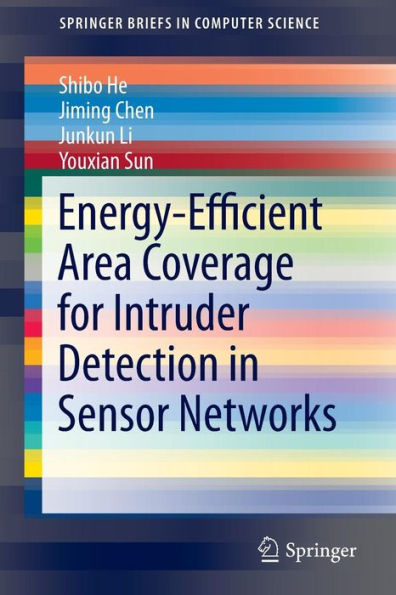Energy-Efficient Area Coverage for Intruder Detection in Sensor Networks
This Springer Brief presents recent research results on area coverage for intruder detection from an energy-efficient perspective. These results cover a variety of topics, including environmental surveillance and security monitoring. The authors also provide the background and range of applications for area coverage and elaborate on system models such as the formal definition of area coverage and sensing models. Several chapters focus on energy-efficient intruder detection and intruder trapping under the well-known binary sensing model, along with intruder trapping under the probabilistic sensing model. The brief illustrates efficient algorithms rotate the duty of each sensor to prolong the network lifetime and ensure intruder trapping performance. The brief concludes with future directions of the field. Designed for researchers and professionals working with wireless sensor networks, the brief also provides a wide range of applications which are also valuable for advanced-level students interested in efficiency and networking.
1133129551
Energy-Efficient Area Coverage for Intruder Detection in Sensor Networks
This Springer Brief presents recent research results on area coverage for intruder detection from an energy-efficient perspective. These results cover a variety of topics, including environmental surveillance and security monitoring. The authors also provide the background and range of applications for area coverage and elaborate on system models such as the formal definition of area coverage and sensing models. Several chapters focus on energy-efficient intruder detection and intruder trapping under the well-known binary sensing model, along with intruder trapping under the probabilistic sensing model. The brief illustrates efficient algorithms rotate the duty of each sensor to prolong the network lifetime and ensure intruder trapping performance. The brief concludes with future directions of the field. Designed for researchers and professionals working with wireless sensor networks, the brief also provides a wide range of applications which are also valuable for advanced-level students interested in efficiency and networking.
54.99
In Stock
5
1

Energy-Efficient Area Coverage for Intruder Detection in Sensor Networks
97
Energy-Efficient Area Coverage for Intruder Detection in Sensor Networks
97
54.99
In Stock

Product Details
| ISBN-13: | 9783319046471 |
|---|---|
| Publisher: | Springer International Publishing |
| Publication date: | 02/21/2014 |
| Series: | SpringerBriefs in Computer Science |
| Edition description: | 2014 |
| Pages: | 97 |
| Product dimensions: | 6.10(w) x 9.25(h) x 0.01(d) |
From the B&N Reads Blog
